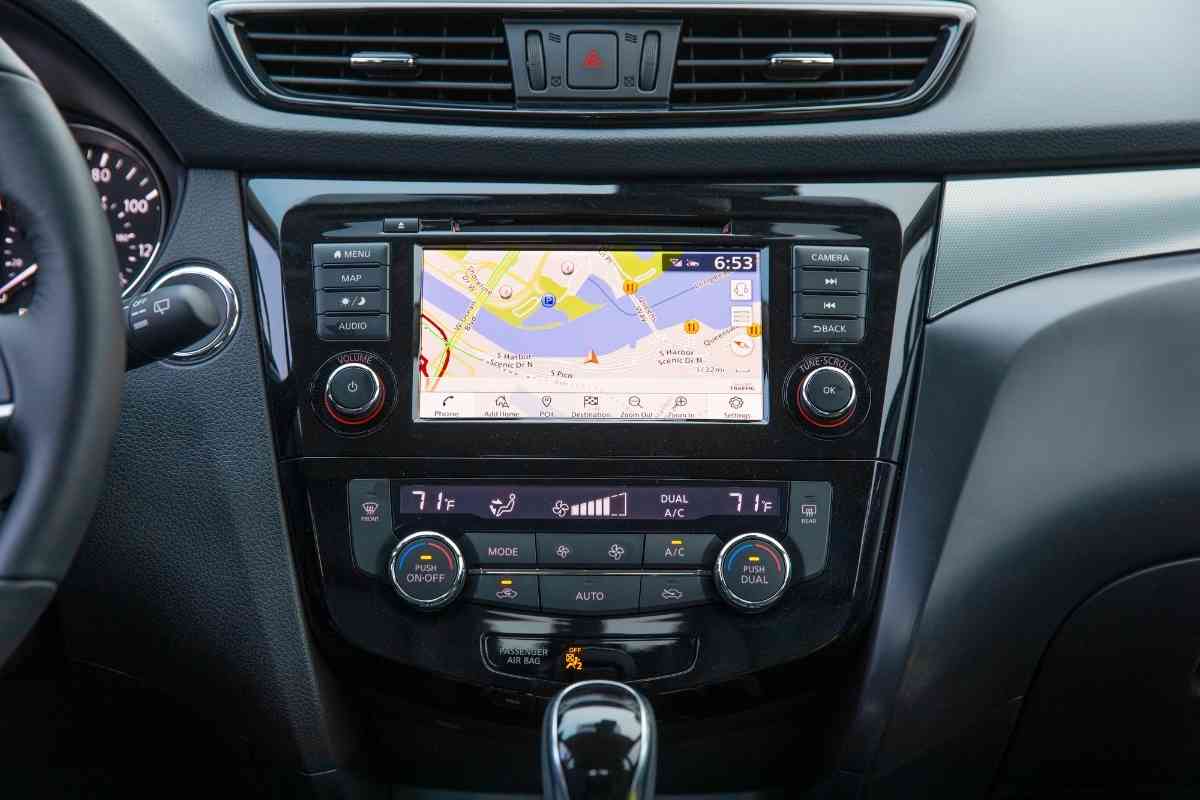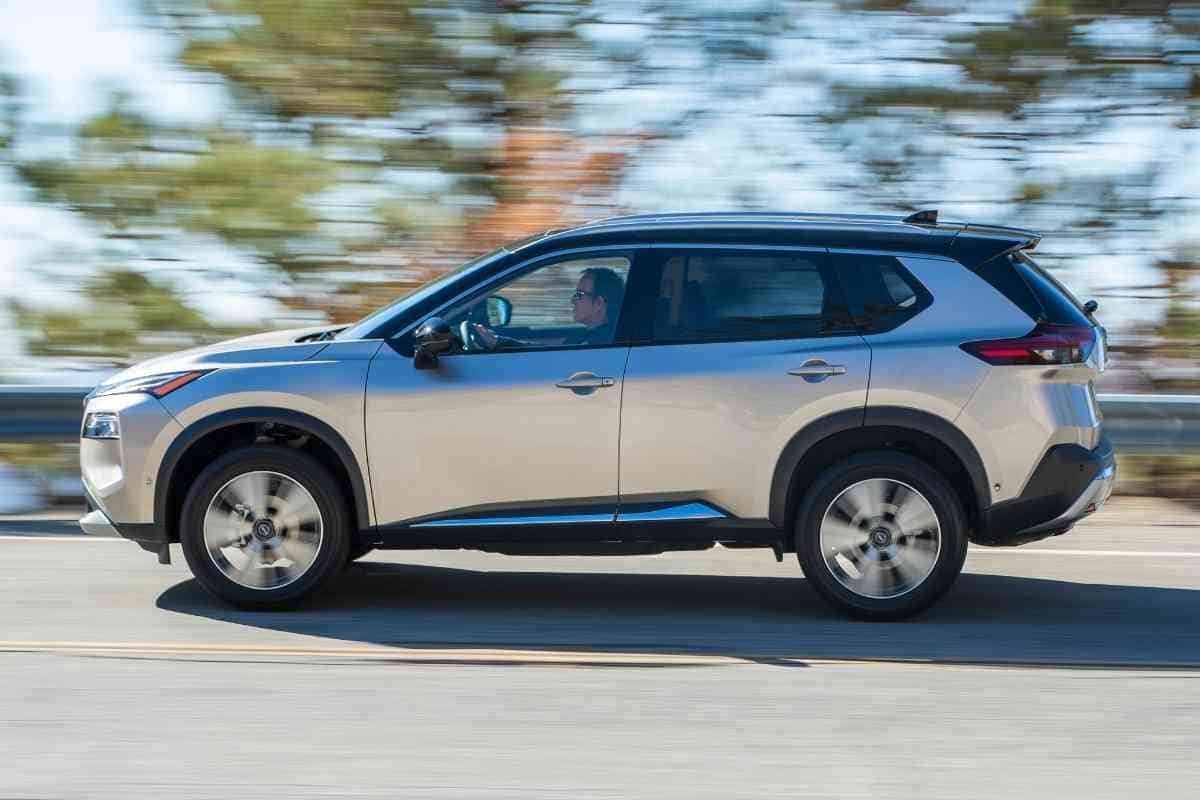Why Does My Nissan Rogue Say Chassis Control?
When driving your new Nissan Rogue, you may see an image of your vehicle pop up in the information display and say ‘Chassis Control’. Should you worry?

Seeing words on your car’s dashboard that you don’t recognize can be alarming, but this is a beneficial feature Nissan has added to its newer models. Even though it is a good thing, knowing what this means and how it functions in your car is wise.
Why Does My Nissan Rogue Say Chassis Control?
New Chassis Control on Nissans is a modern feature that improves the car’s suspension, brakes, and steering. If an image of your vehicle on a grid appears on your car computer in front of you with something that says ‘Chassis Control’, it means the chassis control is engaged and assisting your driving.
This alert is good, as it means the chassis control is working! It will usually flash on when managing a complicated corner or extra bumpy road.
Continue reading to learn all about the Nissan Rogue’s New Chassis Control and the systems that make it up.
Learning about the ins and outs of this modern technology will help you appreciate the benefits it offers.
What Is Chassis Control?
Chassis control is the system that controls suspension, steering, and brakes during daily driving.
Chassis control is an essential part of your vehicle, and with recent computer technology, these controls have come a long way.
Many cars now feature Electronic Stability Control, a system in the chassis control that helps maintain course when steering.
With chassis control systems and modern technology, people can be more comfortable staying in their lane without constantly correcting the car’s direction.
Nissan New Chassis Control
New Nissan vehicles feature three state-of-the-art technologies that bring their chassis control to a new level.
These new controls help the driver control the vehicle when turning and braking, making for an overall safer experience.
Below is an explanation of each of these features so you know what the new Nissan models have to offer and what your new car can do.
Intelligent Ride Control
Intelligent ride control, also called active ride control, engages when driving on bumpy, uneven surfaces where all the tires are not level.
The ride control system takes in information like the rotation of each wheel, the steering angle, and the requested traction torque to regulate each wheel’s weight load and adjust the engine torque.
The system functions at 25 miles per hour or faster on undulating surfaces. The ride control also monitors the movement of the car’s upper body.
This monitoring will reduce torque and make for a more comfortable ride.
You may hear a noise when ride control is on or feel the car decelerate on tough roads. This sound is normal and a sign that the system is properly operating.
Intelligent Engine Brake

The intelligent engine brake system or active engine brake reduces the need for the operator to depress the brake when rounding a tricky corner. The gear ratio of the transaxle is adjusted to a lower setting, and applies the brake.
The idea behind intelligent engine braking is that the driver doesn’t need to exert as much effort to slow the car down to the correct speed to handle a tough turn.
Intelligent engine brake still requires you to use the brake when turning, but makes it easier.
Using a variety of data, the system estimates vertical G and accounts for it so that the car’s upper body moves less and the ride is more comfortable.
Intelligent Trace Control
Intelligent trace control, also called active trace control, helps the ABS (automatic braking system) unit function better when the car is cornering.
When turning, the ABS is automatically activated by trace control. It adjusts the brakes on the inside and outside to give the driver better control.
The active trace control uses multiple sensors around the car to send commands to the ABS actuator and electric control unit, which control the brakes.
You can turn off the intelligent trace control if you want, but partial functions will stay in operation. Note that when the trace control is engaged, you may feel a slight vibration in the brake pedal, which is normal and nothing to worry over.
Benefits of Chassis Control
If you are still not convinced of the benefits of the New Nissan Chassis Control, let’s explore how the high-tech features affect your driving experience.
This section will help you understand the effects of these three systems you may not have consciously noticed otherwise.

Enhanced Rider Comfort
This feature is probably the number one benefit of the New Nissan Chassis Control. The three systems all work to reduce vibrations in the car and bumpiness despite the road you are on.
Riders won’t be thrown out of their seats when you take a sharp corner, and they won’t feel the slam on the brakes when you come to a stop.
Many drivers operate their vehicles with these movements in mind to keep their passengers and themselves as comfortable as possible.
The chassis control in Nissans helps the driver make these gentle movements and maintain stable control over the car.
Improved Driver Confidence
Since the chassis control helps drivers control their movements and stabilize the car, it improves driver confidence even on poorly paved roads.
So, taking sharp turns and driving over uneven surfaces will cause less tumultuousness in the car. The driver will feel better in these less-than-ideal environments.
Driver confidence is important, as it helps you stay more alert and aware of your surroundings.
However, nervous drivers are more likely to make mistakes and avoid rough areas that the Nissan Rogue can likely handle.

Longer Lasting Tires
And lastly, because of the transaxle stabilization, the tire treads should wear down evenly.
When traveling on rough roads without this technology, one side of the car usually takes the brunt of the journey, wearing down the tires unevenly.
This unbalanced wearing will likely force you to replace all four tires when two tires cannot fulfill their full potential.
If your tires are all evenly worn down, you get the most out of the set and save money in the long run.
Signs of Trouble
Like any mechanical or electronic system, the chassis control can sometimes malfunction.
If you see or feel, or hear any of these symptoms in your vehicle, you may want to have a mechanic or Nissan dealer take a look at your chassis control system.
They can ensure active ride control, engine brake, and trace control are properly functioning.
- Chassis Control System Error warning message
- Sagging suspension
- The suspension compressor is always on
- Compressor always off
- Compressor noises
- Bottoming out on bumps or
- Very rough riding experience
- The front end goes down when braking
- Steering is difficult
- Steering pulls to one side
- The vehicle bounces after a bump
- Uneven tire tread wear
- An oily or damaged strut
Bottom Line
Nissan New Chassis Control on the Nissan Rogue is an incredible feature that enhances your car’s driver comfort, confidence, and lifespan.
When chassis control appears on your dashboard, you can feel safe and secure knowing your car is helping you maintain control and stay on course.
